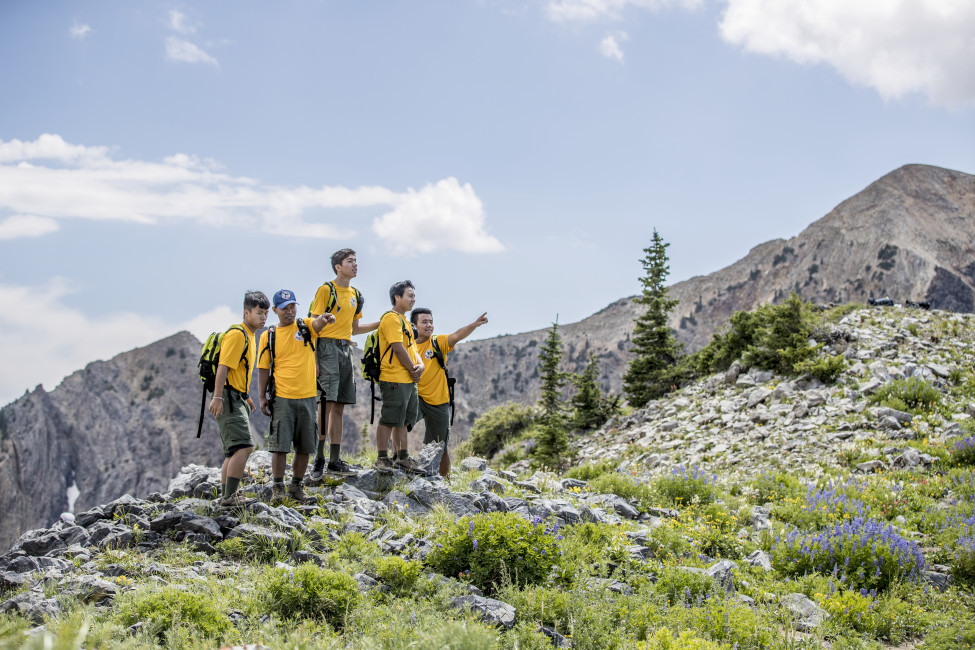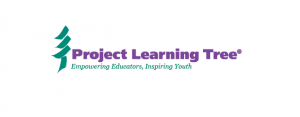
These Activities Get Scouts of All Ages Excited About Environmental Education
 Boy Scouts of America has teamed with the Sustainable Forestry Initiative (SFI) and its award-winning environmental education program, Project Learning Tree (PLT). We’ve been working together to provide Scout leaders with ideas and outdoor, hands-on activities from PLT to help support Cub Scouting Adventures and Scouts BSA Merit Badges. PLT activities make learning about nature and the environment fun for all ages, while also building 21st century skills. The activities can be conducted by anyone at any time and provide lots of useful tips for managing active child behavior both indoors and outdoors.
Boy Scouts of America has teamed with the Sustainable Forestry Initiative (SFI) and its award-winning environmental education program, Project Learning Tree (PLT). We’ve been working together to provide Scout leaders with ideas and outdoor, hands-on activities from PLT to help support Cub Scouting Adventures and Scouts BSA Merit Badges. PLT activities make learning about nature and the environment fun for all ages, while also building 21st century skills. The activities can be conducted by anyone at any time and provide lots of useful tips for managing active child behavior both indoors and outdoors.
What Is Project Learning Tree?
Project Learning Tree is designed for educators, parents, and community leaders working with youth from preschool through grade 12. Established in 1976, the program’s activities are designed to get kids outside, connect children to nature in meaningful ways, and grow understanding of our shared environment.
The activities are fun and easy to do, and they relate to all kinds of subjects—from reading and writing, to science and math, to social studies and art. There are activities for all grade levels, and they are suitable for all demographics— urban, suburban, or rural.
In addition to building knowledge, PLT activities are great for developing STEM skills, such as collaboration and teamwork, creativity and imagination, critical thinking and problem solving. They also sow seeds of opportunity and encourage youth to explore careers in forestry and natural resources conservation.
Find a Project Learning Tree Activity
Project Learning Tree activities have been correlated to eight Cub Scout Adventures and six BSA merit badges. These crosswalks quickly show which PLT activities can provide fun and inspiring approaches for exploring the Adventure topics and Merit Badge requirements.
Cub Scout Adventures
This correlation is designed to assist parents, den leaders, and Cubmasters in helping Cub Scouts meet the following Adventure requirements. While the PLT lessons referenced will not satisfy all of the requirements a Cub Scout must fulfill to secure an Adventure, they will assist leaders in covering over half of the requirements for each of the following:
- Mountain Lion (Lion)
- Ready, Set, Grow (Lion)
- My Tiger Jungle (Tiger)
- Fur, Feathers, and Ferns (Bear)
- Grow Something (Wolf)
- Spirit of the Water (Wolf)
- Into the Wild (Webelos)
- Into the Woods (Webelos)
For example, in PLT’s “Are Vacant Lots Vacant?”Activity, Scouts are invited to look closely over one small square and find that plants of all kinds thrive in vacant lots, along with a host of animals including insects, birds, and mammals. This activity transforms a nearby vacant lot, overgrown strip, or a landscaped area into a rich laboratory for Scouts to examine elements of an ecosystem. This activity supports the Tiger “Backyard Jungle” Adventure first requirement of “taking a 1-foot hike.”
BSA Merit Badges
This correlation is designed to assist merit badge counselors and Scoutmasters in helping Scouts meet the badge requirements for six merit badges. While the PLT lessons referenced will not satisfy all of the requirements a Scout must fulfill to secure a Merit Badge, they will assist leaders in covering over half of the requirements for each of the following:
- Environmental Science
- Forestry
- Nature
- Pulp and Paper
- Soil and Water Conservation
- Sustainability
For example, in PLT’s “A Forest of Many Uses” Activity, Scouts are taught how privately and publicly owned forests are managed to provide many different resources. Scouts learn how forests are managed to meet a variety of human and environmental needs. This experiential learning fulfills the Forestry Merit Badge’s Requirement 3.A (2), which necessitates that Scouts can “describe contributions forests make to social well-being.”
Why Project Learning Tree and the BSA Are a Natural Fit
Project Learning Tree and Boy Scouts of America are natural allies as we both aim to provide experiential, hands-on learning that results in positive outcomes for youth. We both value time spent outdoors and the lessons learned from those experiences. Combining both programs can truly enhance experiences for youth.
“I first became introduced to PLT when I was volunteering as a troop leader. Immediately I was hooked,” says Jane Thornes, 4th grade teacher at Heyburn Elementary School in St. Maries, Idaho. “The easy-to-follow approach that PLT uses to educate young minds is smart, refreshing, and fun.”
A hallmark of PLT is how easily you can begin using it right away, in any setting. While PLT activities employ highly effective and well-tested teaching strategies, they can be used by anyone. Each activity provides step-by-step instructions for getting ready, conducting the activity, and assessing learning. Many activities can be conducted in an hour, rely on simple materials that you likely already have on hand, and can be implemented with minimal prep time.
“The benefits of connecting kids to the outdoors has implications in many aspects of their lives, and using PLT is a great way to get kids excited about nature,” says Kathy Fischer, a Michigan 4-H Program Coordinator. “PLT activities connect to all educational disciplines, so they are easy to intertwine and reinforce concepts already being taught.”
For more information, visit https://www.plt.org/bsa.



